A fabric made up of 120 small businesses and craft workshops that ensure a genuine high quality product.
Chocolate
The history of chocolate intersects with Umbrian history about 100 years ago, when Francesco Andreani, Leone Ascoli, Francesco Buitoni and Annibale Spagnoli founded the Perugina Company for the production of confetti, candies, chocolate and cocoa powder, better known later as Perugina. Since then, many things have changed, but nothing has affected this elective union.
On the contrary, more and more elements have reinforced this link over time, helping to identify Umbria as a fundamental destination for chocolate lovers. In more recent times, the symbol of this marriage of love is well represented by Eurochocolate, the favorite event for the gluttons of Europe that, every year in October, welcomes hundreds of thousands of people to Perugia. Symbol of tenderness, the chocolate is the most classic of the gifts between lovers and Terni, homeland of San Valentino, proudly welcomes this sweet tradition by hosting Cioccolentino inside the Valentinian celebrations.
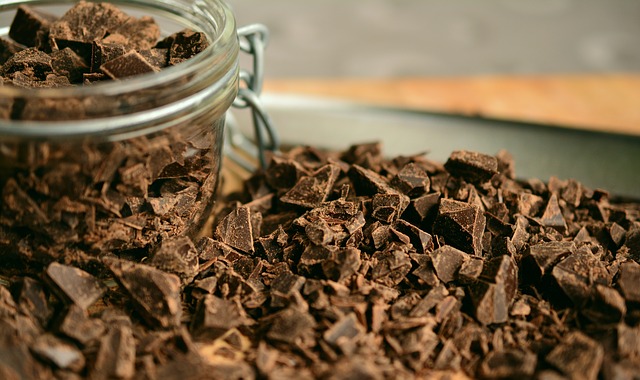
In addition to individual events and celebrations, the tradition of chocolate today is perpetuated in Umbria by a fabric made up of 120 small businesses and craft workshops that ensure a genuine high quality product. To promote and enhance a common identity of companies in 2009 was born, on the initiative of the Chamber of Commerce of Perugia, the District of Chocolate, a reality promoter of interesting initiatives.
Coming from the distant Americas, chocolate as we know it today, however, represents in all respects a distinctive product of the European continent that has reached its specificity thanks to the processes of transformation and the contamination between flavors of different cultures. With the aim of promoting, enhancing and protecting the cultural heritage linked to this product, the Chocolate District of Perugia and the Italian Chamber of Commerce system, they presented their candidature for the Council of Europe on the cultural route Le Vie del Cioccolato.
Twenty-three paths to connect the South to the North of Europe with chocolate flavor. Roads that represent, first of all, vehicles for communication and cultural exchange between nations and cultures. The axis identified will link the cities of Modica, Terni, Perugia, Cuneo, Turin, Vienna, Barcelona, Alicante, Zaragoza, Bayonne, Paris, Brussels, Bruges and London.
Cheeses
The most modern technologies but, at the same time, the old traditions and the ancient ritual gestures.
Umbria boasts ancient traditions both as regards pastoralism and cheese making. In fact, already Pliny the Elder (1st century AD) in Natural History, speaking of the quality and provenance of the various cheeses known in Rome, cites the pecorino of Umbria with the appellative of “sansinate”.
In the Umbrian dairies we can see how the cheese is treated, using the most modern technologies but, at the same time, respecting the old traditions with the use of natural ingredients and adopting ancient ritual gestures, such as the manual handling of the cheese shapes.
Due to the low presence of plains, sheep cheeses are the best.
The town of Norcia, famous throughout the world for the production of truffles, offers a large part of the range of cheeses of the region with its Pecorino and ricotta salata, as well as the caciotta with truffles, a typical product of the Umbrian woods. Among the soft cheeses with soft dough, we recommend Ravaggiolo Umbro, produced in the first six months of the year and consumed fresh after having it rested for a few days in fern leaves.
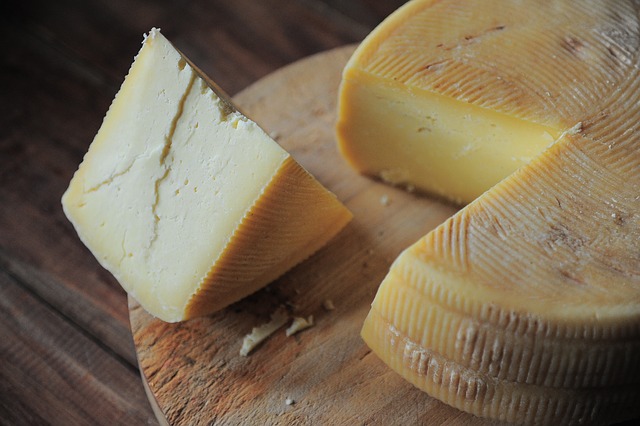
Cacio Fiore is a very traditional cheese produced from the best cow’s milk from the spring period. It is packaged in fresh caciotta with a delicate flavor and, together with cured meats, is the greedy soul of the typical Umbrian appetizer. In the local gastronomic tradition, the most precious flower cheese is that coming from the Pian di Chiavano area near Cascia, thanks to the unique aroma that the pastures of the area manage to give it.
Giuncata is a curd of whole milk that is slowly tightened in canestrelli di rattan, hence the name. It is used to taste it with sugar and cinnamon and is the typical ritual cheese, particularly common in Valnerina, where it was prepared for the Ascension festivities.
Pecorino di Norcia is the top of the Umbrian dairy production and represents an excellence in a sector in which sheep’s milk is dominant compared to the vaccine. The area of origin is the Piana di Castelluccio, where they grow wild aromatic plants such as watercress and wild celery that will allow Pecorino di Norcia to have its unmistakable flavor. At the end of the aging in the cellar of about twelve months, you get a cheese with straw yellow, crumbly and spicy paste.
The sheep’s ricotta is a delicate and traditionally widespread product in the pecorino selection areas. After making the pasta for the typical cheese of Norcia, the liquid left in the “caldara”, called “scaciatu”, is heated to 90-92 degrees until the appearance of the ricotta flakes. Once it has been foamed, it is placed in fuscelle di giunco which favor its draining, the so-called “scotta”.
Even today, ricotta is present in some rites and folk traditions of Valnerina and the Apennine Umbrian ridge. In Cascia, for example, on the day of the feast of S. Antonio Abate on 17 January, portions of ricotta topped with liqueur are distributed to the population.
Norcineria
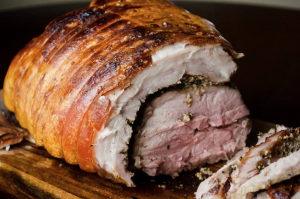
The norcineria is the art of processing pork by the norcino, a true master of the skilful techniques that have been handed down since the Middle Ages and that characterize the production of Preci, Norcia and the entire Valnerina. The basic seasonings of the butcher are: salt, pepper, spices and herbs, but the right mixture and precise quantities represent the true secret of the family, the origin of unique and irreplaceable products!
The undisputed king of the delicacies of the area is the Norcia ham I.G.P. – Typical Geographical Indication. A more in-depth knowledge of the area will lead you to the discovery of innumerable and lesser-known specialties including: capocollo, lombetto, coppa, salami, sausages, barbozzo, mortadella, black pudding, or the characteristic belly mule!
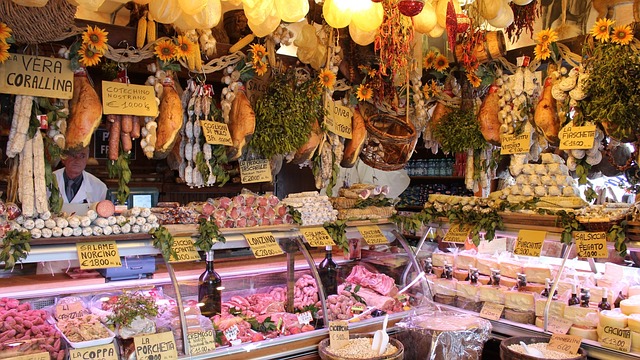
Typical salami of Umbria
Capocollo is a cylindrical salami, presented wrapped in yellow paper and tied, its average weight varies from 2.5-3 kg.
Mule’s balls so called because they remember the testicles of the mule in the form, is a sausage made of lean pork meat, with a lard in the center.
The Coppa di Testa is a rectangular-shaped salami weighing around 15 kg. Once cut, the various colors of the meat can be seen due to the diversity of the parts used for preparation.
La Corallina or Salame Umbro is a typical local production. Cylindrical shape, medium dominance. Inside, lean meat is interspersed with large grease holes.
Guanciale or Barbozzo is obtained from the pig’s cheek. At the end of processing it has a triangular shape, of medium size, weighing from 800-1000 grams, seasoned and covered with pepper.
Lombetto is a cylindrical sausage, presented wrapped in yellow paper and tied, weighing around 2 kg. Once cut, it is reddish in color with no veins of fat.
The characteristic Mazzafegati are similar to the common fresh sausages, tied together by string, the weight varies from 80 to 150g. The curiosity is that you can taste both savory or sweet.
Porchetta is typical Umbrian street-food. The pork is cooked whole, including the head, boned, seasoned and tied with string. Feature the golden crust.
The local ham derives from the seasoned pork leg. It presents the characteristic pear shape and is covered with pepper where it is not protected by the rind.
The Norcia Salami with a cylindrical shape of medium size, the weight varies from 300 to 500 grams, ground to very fine grain.
The Sanguinaccio is also cylindrical in shape, once cut it has a dark red color where the light color of the ingredients stands out, the weight varies from 500 to 800 grams.
La Ventresca. It is necessary to distinguish between rolled and stretched ventresca: the first is a cylindrical salami. The belly of the pig is rolled and seasoned, generally has a weight ranging from 3 to 4 kg. The stretched belly comes from the same cut, but presents itself with the rind. After processing it is not rolled up, but cut into rectangular shapes a few centimeters high and aged.
Olive oil
The green of the Umbrian hills is illuminated by the silver reflections of over seven million olive trees that here grow placid. Notoriously symbol of Peace, the olive tree is a plant that well represents Umbria, a land of great spirituality, capable of lovingly preserving secular traditions.
Long-lived, robust and slow growing, the olive tree describes the spirit of these places and its inhabitants. And so olive oil, the protagonist of regional gastronomy, made of simple and straightforward, genuine and tasty foods.
The production of extra virgin olive oil in Umbria has ancient origins, which date back to the Etruscans and, even today, is one of our most important resources with an annual production of about 90,000 quintals. About 8,000 of these receive the D.O.P. – Protected Designation of Origin – to guarantee the production area.
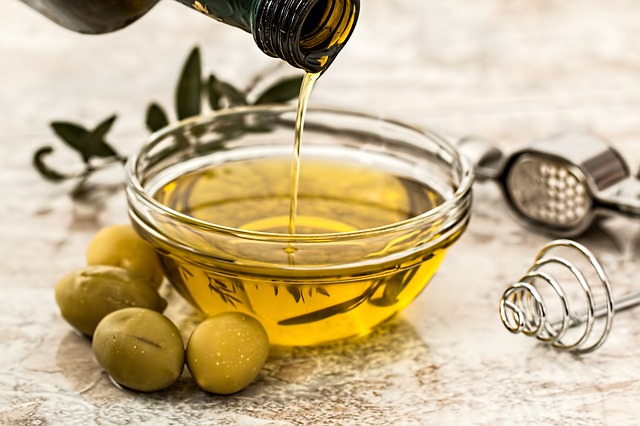
The oils of Umbria
Based on the different characteristics of the territory and the types of the olive tree, five areas of excellence for the production of extra virgin olive oil, D.O.P. in Umbria. Let’s discover together collocation, features and the best combinations!
DOP Colli del Trasimeno
The production area obviously affects the hills around Lake Trasimeno and, administratively speaking, covers the municipalities of Perugia, Piegaro, Panicale, Castiglione del Lago, Magione, Tuoro sul Trasimeno, Lisciano Niccone, Umbertide, Città di Castello, Monte Santa Maria Tiberina, Corciano, Citerna, San Giustino, Montone and Pietralunga. To best enjoy this type of oil, fruity and light, we recommend to use it to embellish carpaccio of lake fish, noble roasted fish, vegetable purée, porcini mushrooms and medium-aged cheeses.
DOP Colli Orvietani
An oil with a fruity and medium-spicy flavor. The name includes the municipalities of Montecchio, Baschi, Orvieto, Porano, Castel Giorgio, Castel Viscardo, Allerona, Ficulle, Parrano, San Venanzo, Monteleone d’Orvieto, Fabro, Montegabbione, Montecastello di Vibio, Fratta Todina, Marsciano, Città della Pieve .
Excellent with porcini mushroom salads, vegetable soups and medium-aged cheeses.
DOP of the Colli Amerini
It is produced in the areas of Calvi, Otricoli, Narni, Amelia, Penna in Teverina, Jupiter, Attigliano, Lugnano in Teverina, Alviano, Guardea, San Gemini, Montecastrilli, Avigliano.
Its light taste goes perfectly with delicate dishes based on lake fish, boiled vegetables and grilled white meat.
DOP of the Assisi-Spoleto Hills
It is the oil of the Umbrian Valley with the municipalities of Gubbio, Scheggia, Costacciaro, Sigillo, Fossato di Vico, Gualdo Tadino, Valfabbrica, Assisi, Spello, Valtopina, Foligno, Trevi, Sellano, Campello sul Clitunno, Spoleto, Scheggino, Sant ‘ Anatolia di Narco, Vallo di Nera, Cerreto di Spoleto, Preci, Norcia, Cascia, Poggiodomo, Monteleone di Spoleto, Montefranco, Arrone, Polino, Ferentillo, Terni, Stroncone. An oil with a structured flavor with a strong bitter and spicy sensation. Its ideal connubi are meat carpaccio, boiled legumes and vegetable soups.
DOP of the Martani Hills
Produced in the municipalities of Acquasparta, Spoleto, Massa Martana, Todi, Castel Ritaldi, Giano dell’Umbria, Montefalco, Gualdo Cattaneo, Collazzone, Bevagna, Cannara, Bettona, Deruta, Torgiano, Bastia Umbra. Fruity and strong goes well with bruschetta, salads and hard cheeses.
Truffle
“That name the gourmets of all ages have never said it without bringing their hand to the hat.” This is how Alexandre Dumascelebrates his passion for truffles. Known since the ancient Sumerians, the precious tuber represents, today more than ever, an excellence of the Italian gastronomic tradition.
In Europe, there are about thirty species of traced tuber, but the species of great value have extremely limited production areas and Umbria is among them. White or black, Umbria appears as a large truffle land with about eight truffle species available throughout the year.
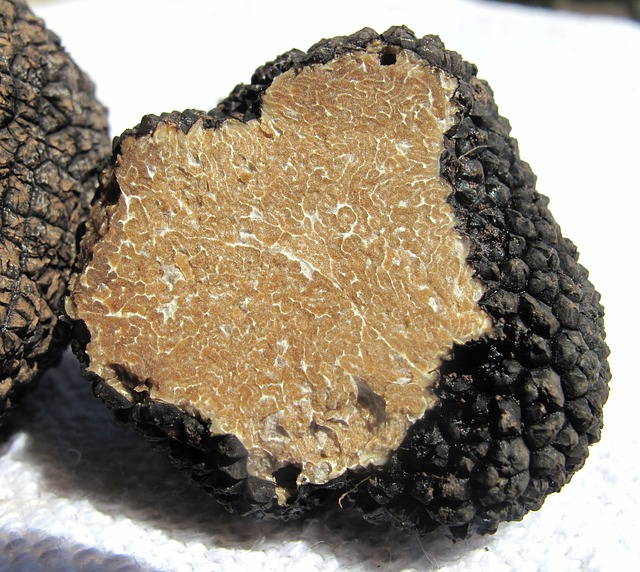
Outside they are black, while the interior is white, tending to hazel in the summer, and decidedly nutty in the winter.
White truffle
Commonly known as the trifola, it is widely used in the areas of Città di Castello, Gubbio, Gualdo Tadino, Valtopina, Orvieto, Fabro and Città delle Pieve. The white truffle is collected mainly along the banks of rivers and other watercourses. The shape and size of the tubers is variable, while outwardly it is basically smooth, of a light yellow color. The interior is more or less dark hazel with very thin white veins. The smell is intense. Collection is allowed from October to December.
Black truffle
Typical of the areas of Norcia and Spoleto is also widespread in the areas of Gualdo Tadino and Terni. It is collected in the woods of high hills and mountains near oaks, hornbeams, hazels and holm oaks. Around these plants usually form extensive and circular areas with no grass. The size of the tubers varies from that of a hazelnut to that of an orange. Outside it is black and inside it is black-violet with strong white veins. The scent is delicate and pleasant. Harvesting is allowed from December to March and it is possible to grow it successfully.
Summer scorzone and winter scorzone
Very common in the Umbrian territory, especially near the production areas of precious truffles, they are often found under deciduous and coniferous plants. Outside they are black, while the interior is white, tending to hazel in the summer, and decidedly nutty in the winter. The scent is pleasant and more pronounced in winter quality. In Umbria, they are experimenting with their cultivation in very small areas. The summer scorzone collection goes from June to August, while the winter one goes from October to December.
Other species of truffle are the bianchetto, the winter truffle, the muscat and, as we said, ordinary black.
The best truffle recipes? Impossible to choose!
This tasty ingredient can transform the simplest foods into refined dishes. The prized white truffle will have no better company than a hand-pulled noodle, a drizzle of D.O.P. Umbro and some flakes of butter. The fine black minced finely and beaten with fresh eggs of the day will make you think again about the concept of “omelette”!
- Diamante Nero – Scheggino (PG)
- Mostra Mercato Nazionale del Tartufo Bianco e dei Prodotti Agroalimentari – Gubbio (PG)
- Mostra Mercato Nazionale del Tartufo – Fabro (TR)
- Mostra Mercato Nazionale del Tartufo – Valtopina (PG)
- Mostra Mercato Nazionale del Tartufo Nero Pregiato di Norcia e dei Prodotti Tipici – Norcia (PG)
- Mostra Nazionale del Tartufo Bianco – Città di Castello (PG)
- Mostra Mercato del Tartufo e della Patata Bianca – Pietralunga (PG)
- La Bisaccia del Tartufaio 2018 – SAPORI E SAPERI VALTIBERINI – Citerna (PG)
- Other festivals
Wine
According to The Wine Enthusiast, the reference magazine for wine lovers in the world, Umbria was among the ten Best Wine Travel Destinations for 2014. The care and quality of its productions combined with the beauty of the landscapes, in many cases still uncontaminated, and to the historical and cultural wealth of its villages have allowed to conquer this important recognition. A reason for extra pride that testifies to what we have been supporting for some time now: it is worth visiting Umbria and getting lost in its countless and valuable local productions.
The areas of Controlled Denomination of Origin in Umbria give rise to numerous qualities of excellent red, white and rosé wine. A mapping of these areas is also at the origin of the so-called Roads of Wine: sensory and cultural itineraries for taste travelers who follow real roads to travel by car, motorbike, on foot, by bike or on horseback.
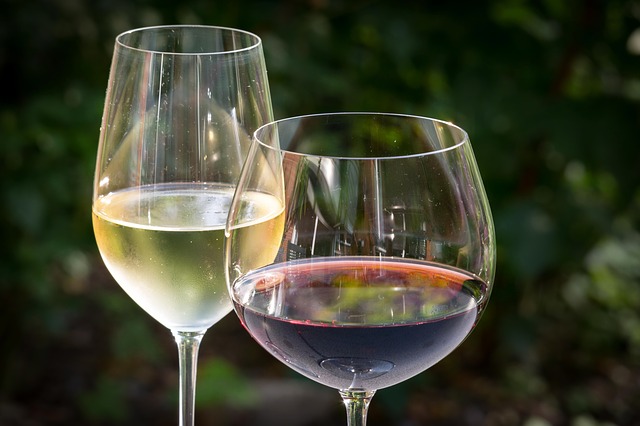
The Strada dei Vini del Cantico
The Strada dei Vini Del Cantico links the towns of Assisi, Bettona, Cannara, Collazzone, Fratta Todina, Marsciano, Massa Martana, Monte Castello di Vibio, Perugia, Spello, Todi and Torgiano. It proposes the DOCG Torgiano Rosso Riserva and five DOC wines (Assisi, Torgiano, Colli Martani, Colli Perugini and Todi) as excellence. La Strada promotes the enhancement of quality winemaking products, linking them to the cultural and environmental values of the territories involved. Among the attractions located along the route, in the town of Torgiano, stands the MUVIT – Wine Museum, defined by the Times as the best museum in Italy dedicated to this historic production.
The Sagrantino Road
La Strada del Sagrantino winds through the territories of Montefalco, Bevagna, Gualdo Cattaneo, Giano dell’Umbria and Castel Ritaldi following the production of this unique excellence of the Umbrian territory. A native vine from which a dense and perfumed juice is obtained. Sagrantino di Montefalco can be dry or raisin. A curiosity about the passito variety is that the typical intensity and sweetness derive from a particular consistency of the skin of the berries that can remain to dry for months, without ever rotting, giving way to the alcohol component to free itself, keeping intact the sugar.
The Strada dei Colli dei Trasimeno
The Strada dei Colli del Trasimeno is one of the most scenic landscape areas in the entire region. Umbria is one of the few Italian regions not to be washed by the sea, but looking out on the shores of Lake Trasimeno, you will understand why we do not miss it. The climate, mitigated by the lake, gives the production the right humidity to ripen slowly without drying up.
The Roman Estruscan Road
The Roman Etruscan Road extends along the southern area of the region between the municipalities of Allerona, Amelia, Baschi, Castel Viscardo, Ficulle, Montecchio, Narni, Orvieto and Terni. La Strada is a journey of taste between ancient and modern, in search of the suggestions of the landscape and close encounters with excellent wines and flavors of the Umbrian tradition. Along the way, also institutional places dedicated to wine and food as the Palazzo del Gusto di Orvieto, a center of culture and food and wine education hosted by the Province of Terni within the San Giovanni complex, in the medieval district of Orvieto. Attached to the Regional Enoteca where a complete review of the provincial and regional winery is on display and tasting, instead the Palazzo Petrignani in Amelia, located in the historic heart of the city, which houses the School of Food.
- VinOtricolando – Otricoli (TR)
- Only Wine Festival – Città di Castello (PG)
- Enologica – Montefalco (PG)
- Cantine aperte a San Martino – tutto il territorio regionale
- Festa Pilese della Torta al Testo e Vini Doc Colli Perugini – Pila (PG)
- Wine Show – Todi (PG)
- Marcellano VinCanta – Marcellano (PG)
- Festa del Vino di Collemancio – Cannara (PG)
- Cantine Aperte – tutto il territorio regionale
- Vinarelli a Torgiano – Torgiano(PG)
Saffron
Starting from the XIII century the production of saffron has affected Umbria, as the Spoletino scholar Pierfrancesco Giustolo specifies in 1499 and composes a didactic poem in Latin hexameters, “De croci cultu” (published posthumously in 1510), in which he meticulously describes the cultivation practice of saffron, distinguishing the areas most characterized by cultivation.
There are numerous provisions concerning “the crocus or zaffarame” contained in many Umbrian municipal statutes since the 13th century and this documents a widespread diffusion on the regional soil [Giacché, 2007].
The oldest reference to the saffron trade in Umbria belongs to the archival documentation of the monastery of S. Maria di Valdiponte, known as the Abbey of Montelabate, near Perugia, in whose 13th century accounting books the purchase of a “uncia” is registered çafarani “, dated 2 February 1226, at the price of 4 soldi and 6 denari.
However, two particularly significant areas emerge from the production point of view: the Spoletino, the Folignate and the Valnerina, on the one hand, and the Pievese, Trasimeno and Orvietano districts on the other.
The good experiences of cultivation have led to the establishment of specific Producer Associations, which in Cascia, Città della Pieve and Spoleto have assumed the connotation of significant and consolidated models thanks to the support of the municipal administrations of the Umbria Region, of ARUSIA and the Mountain Communities and BIM of the territories concerned that saw in the crop an innovative element of the usual agricultural production, with interesting economic potential.
Currently the areas in Umbria to be famous for the production of saffron are Cascia and Città della Pieve, but also Gubbio and Spoleto.
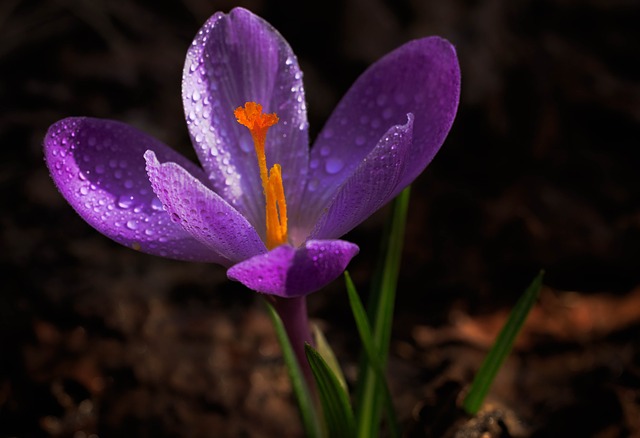
The production of saffron in Città della Pieve has its origins in the thirteenth century: among the oldest evidence that of 1279, in the Statute of Perugia where it was forbidden in the entire countryside and in Città della Pieve, the sowing of piata by foreigners. Its preciousness was linked to the dyeing of precious fabrics. Today, the consortium “Il croco di Pietro Perugino – Saffron of Città della Pieve” is made up of 30 members producing saffron that is sold exclusively in wires to guarantee its authenticity.
In Cascia, after a great diffusion from the ‘200 to the’ 500 also due to its therapeutic properties, the production of saffron was reintroduced in 1999. In 2003 “Association of the Saffron of Cascia – Pure saffron of Umbria” was born about 23 producers and that involves the whole territory of Valnerina. Every year the minimum price of the product is fixed on November 25, on the occasion of the feast of Santa Caterina di Alessandria, following an ancient medieval tradition. If you are in Cascia at the end of October, do not miss the chance to visit the Mostra Mercato dello Zafferano di Cascia.
Sixteen producers of Spoletino are instead gathered in the “Saffron of the Duchy” Association which promotes the consumption of “red gold” with events, festivals and exhibitions in Italy and abroad. Search in one of the many restaurants in Spoleto the maltagliati with saffron and chickpeas, a unique and delicious dish.
The Zafferano Association of Gubbio, on the other hand, is born from the intention of some young people to recover and make known the production of the ancient spice, where some species of Crocus sativus are born spontaneously. In Gubbio taste the Rabbit with Saffron, a dish with a strong flavor, but sweetened by the delicacy of white meat.
If you want to learn more about production, how to harvest and taste saffron-based products, we suggest you to contact the consortia that will be able to orientate you among the many farms in the area to organize guided tours and tastings.
In the “saffron towns” it is also possible to buy pure saffron and saffron-based products in the many shops selling typical products.